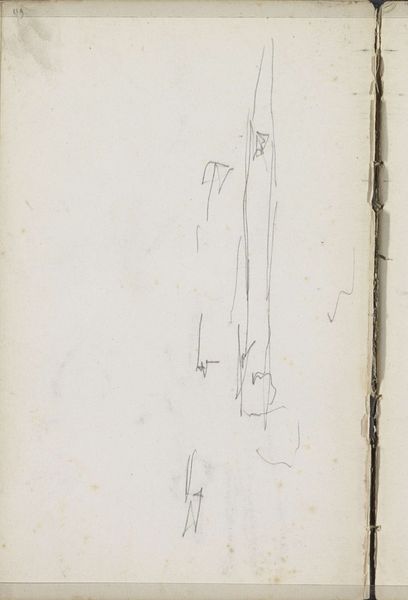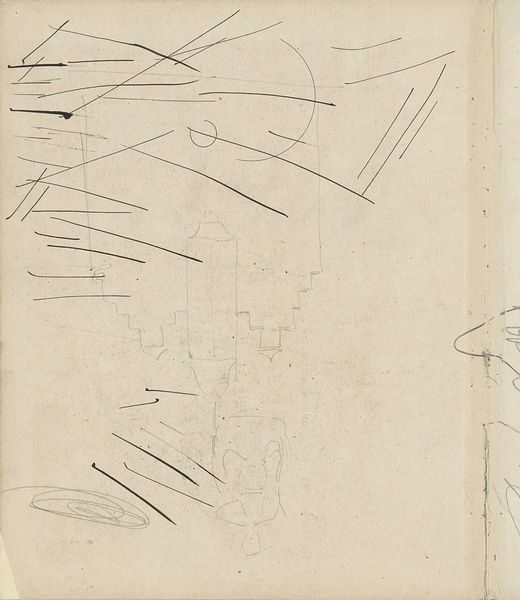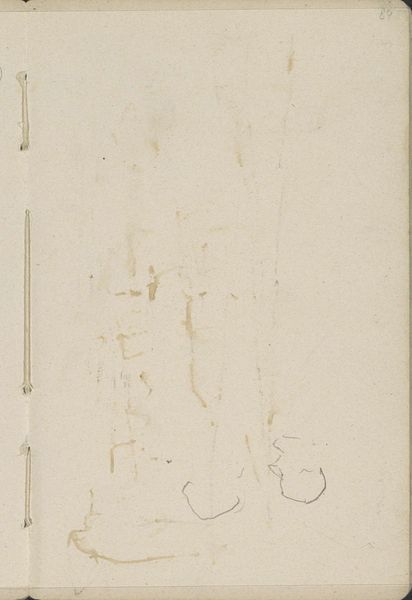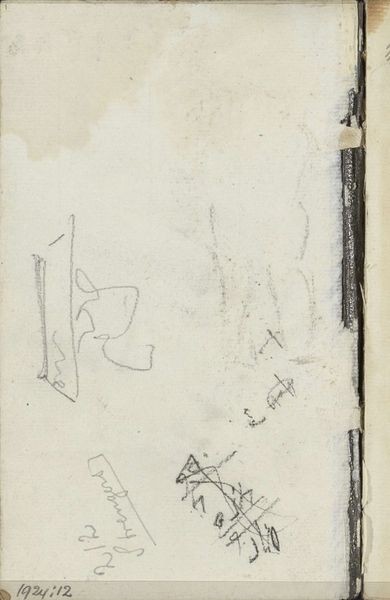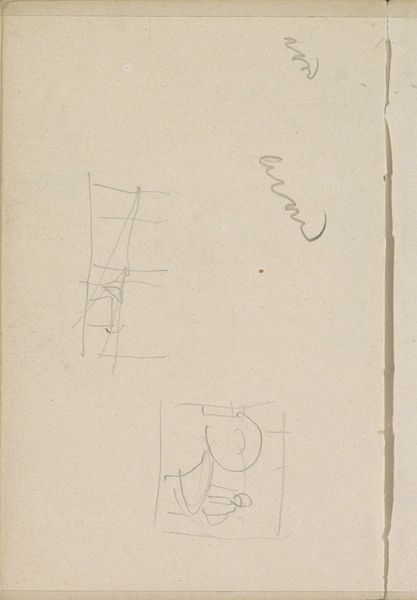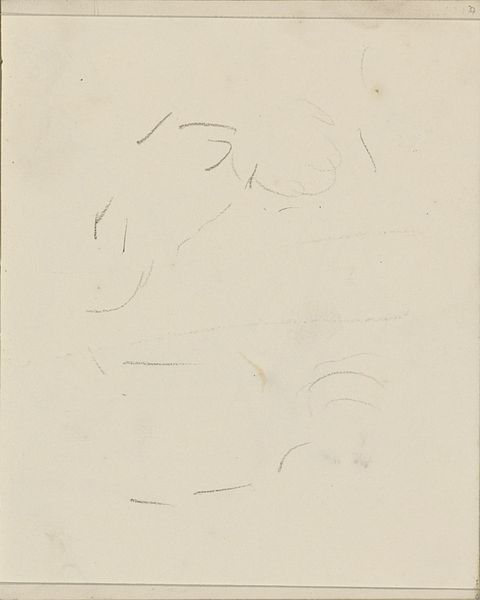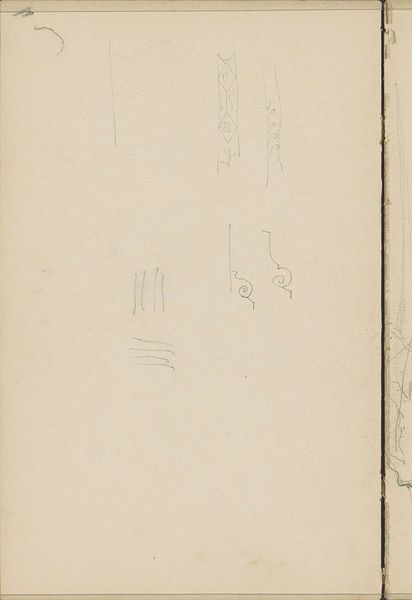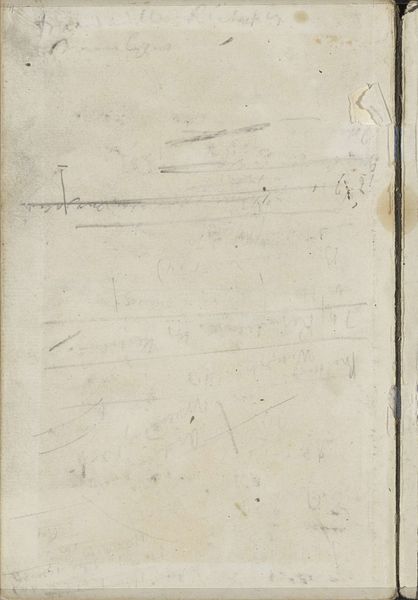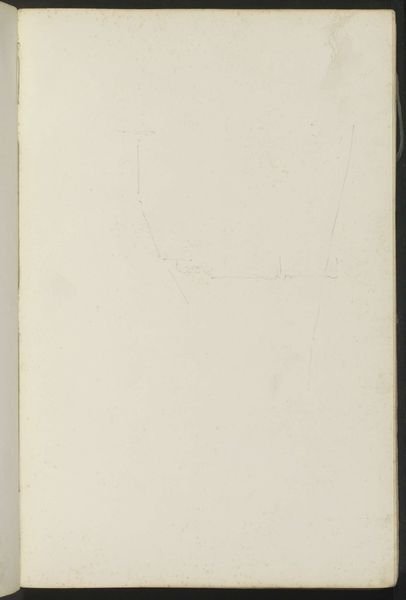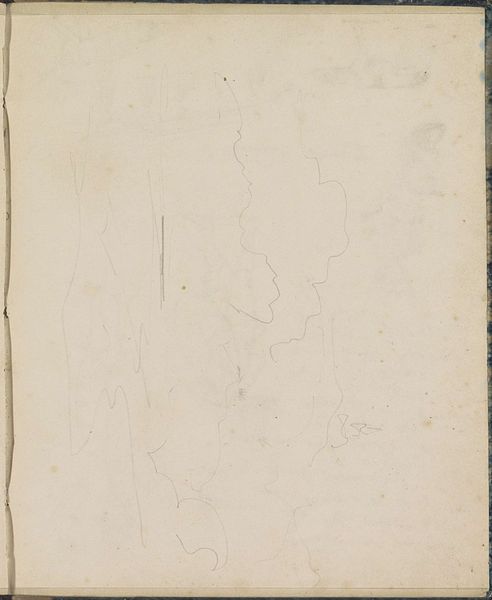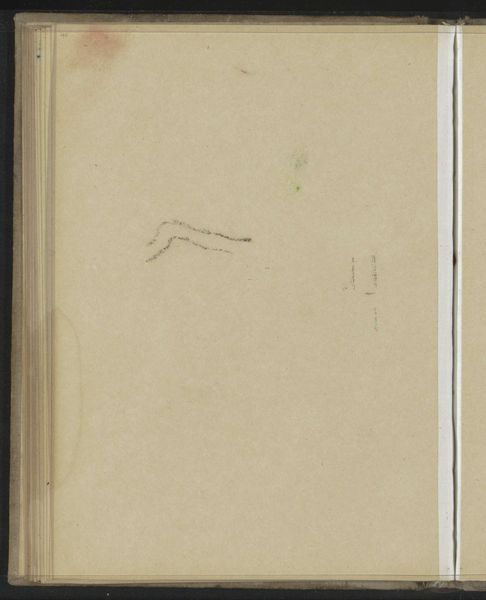
Copyright: Rijks Museum: Open Domain
Curator: Before us, we have George Hendrik Breitner's "Studies," created between 1889 and 1904, currently residing in the Rijksmuseum collection. It's a delicate pencil drawing on aged, toned paper. What strikes you first about it? Editor: The starkness. The raw, almost impatient quality of the lines. It’s more of a visual note than a fully rendered scene. What's compelling is the impression that the forms are just emerging into visibility. Curator: That immediacy speaks to Breitner’s working methods. Known for capturing the bustling streets and daily life of Amsterdam, these sketches offer insight into his artistic process. You can imagine him rapidly capturing impressions. He favored capturing working class subjects, and scenes that he felt represented his own working existence. Editor: And the sketchbook format amplifies this sense. We’re seeing directly into the artist’s mind, witnessing his first, unfiltered responses to the world. What interests me particularly is how such a minimalist rendering manages to communicate so effectively a spatial structure. Curator: Precisely. The materiality—the cheap paper and fleeting marks—reveal the democratization of art happening then, challenging high art by making it immediate. A working method where everyday reality could be documented by an artist and consumed by wider society. The traces of hand-drawn type hints that we're not just witnessing observation, but also the artist making his material preparations to execute larger artworks. Editor: Indeed. You could describe the type as being used as both a structural element, reinforcing the picture plane, and creating, with it’s antiquated fadedness, a visual parallel between written notes, sketches and the overall function of a memory aid. Curator: Breitner's focus on capturing momentary experiences mirrored a wider societal shift towards industrialization and modern life, making works like this less finished object, and more of an instrument of seeing. Editor: Ultimately, these rapidly rendered observations evoke an intangible sensation—that of being there in the moment of creation and recording. Curator: Right. It allows a very intimate interaction with Breitner, because we're privy to his generative process. The simplicity hides an immense depth. Editor: An intriguing glimpse into a mind at work, wouldn't you agree?
Comments
No comments
Be the first to comment and join the conversation on the ultimate creative platform.
